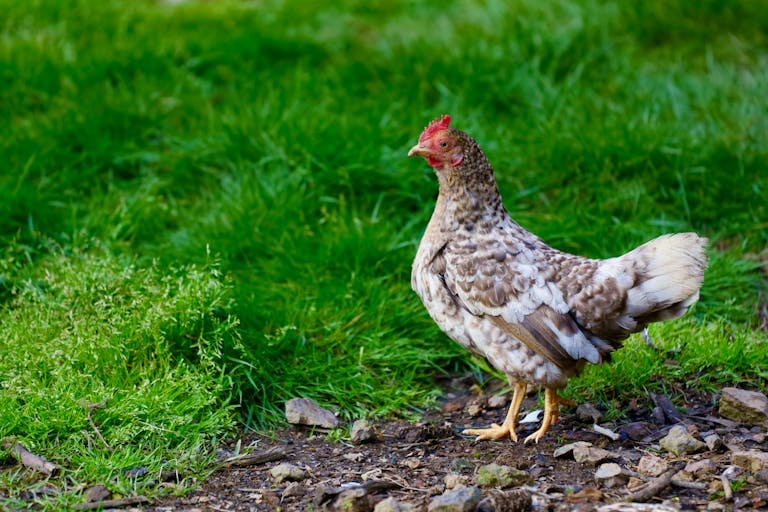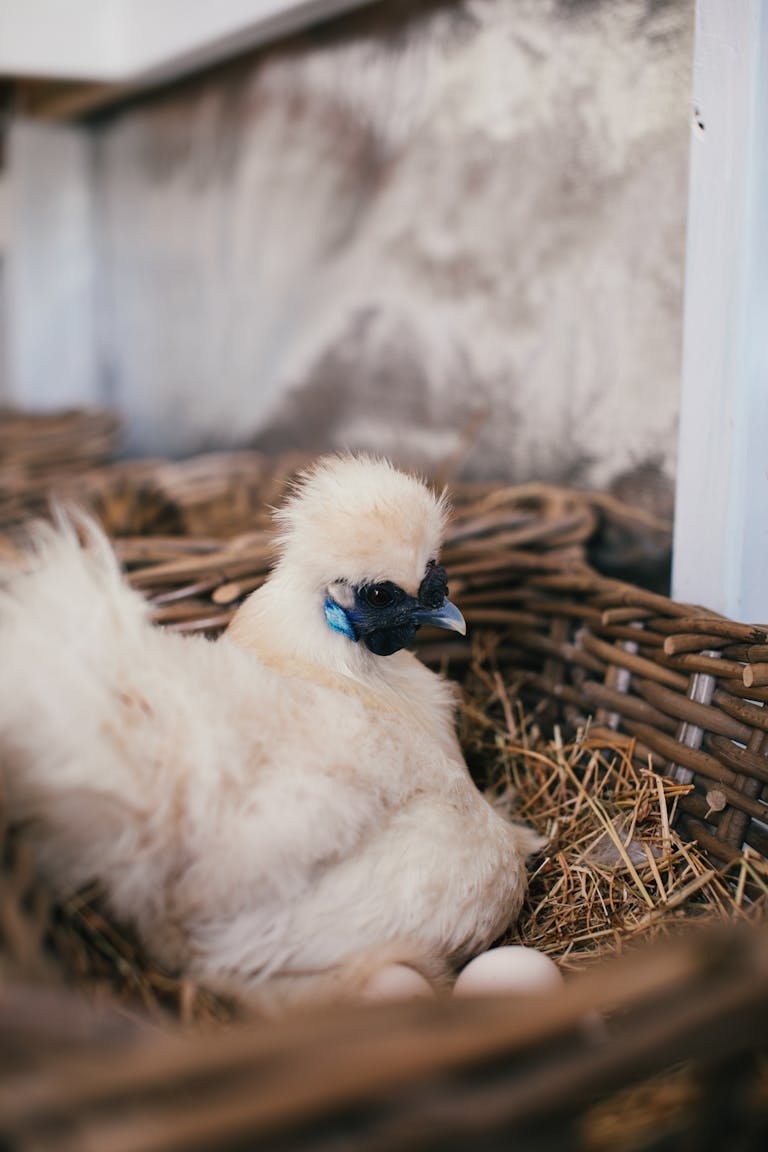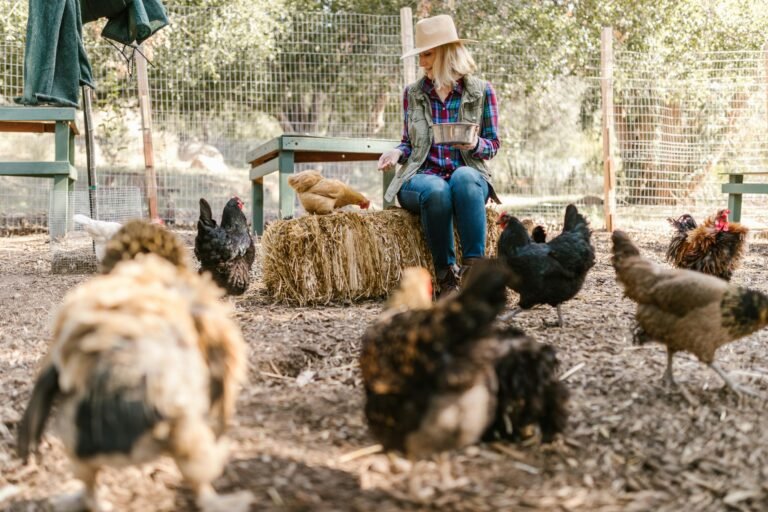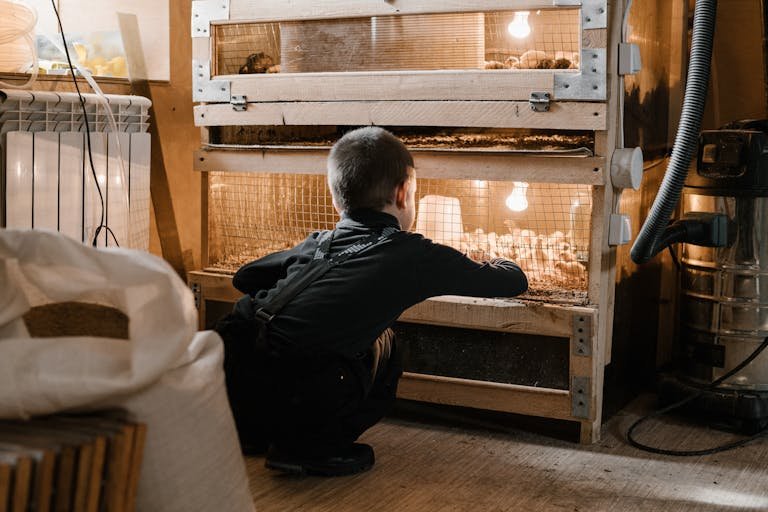What Species of Birds Are Considered Poultry?
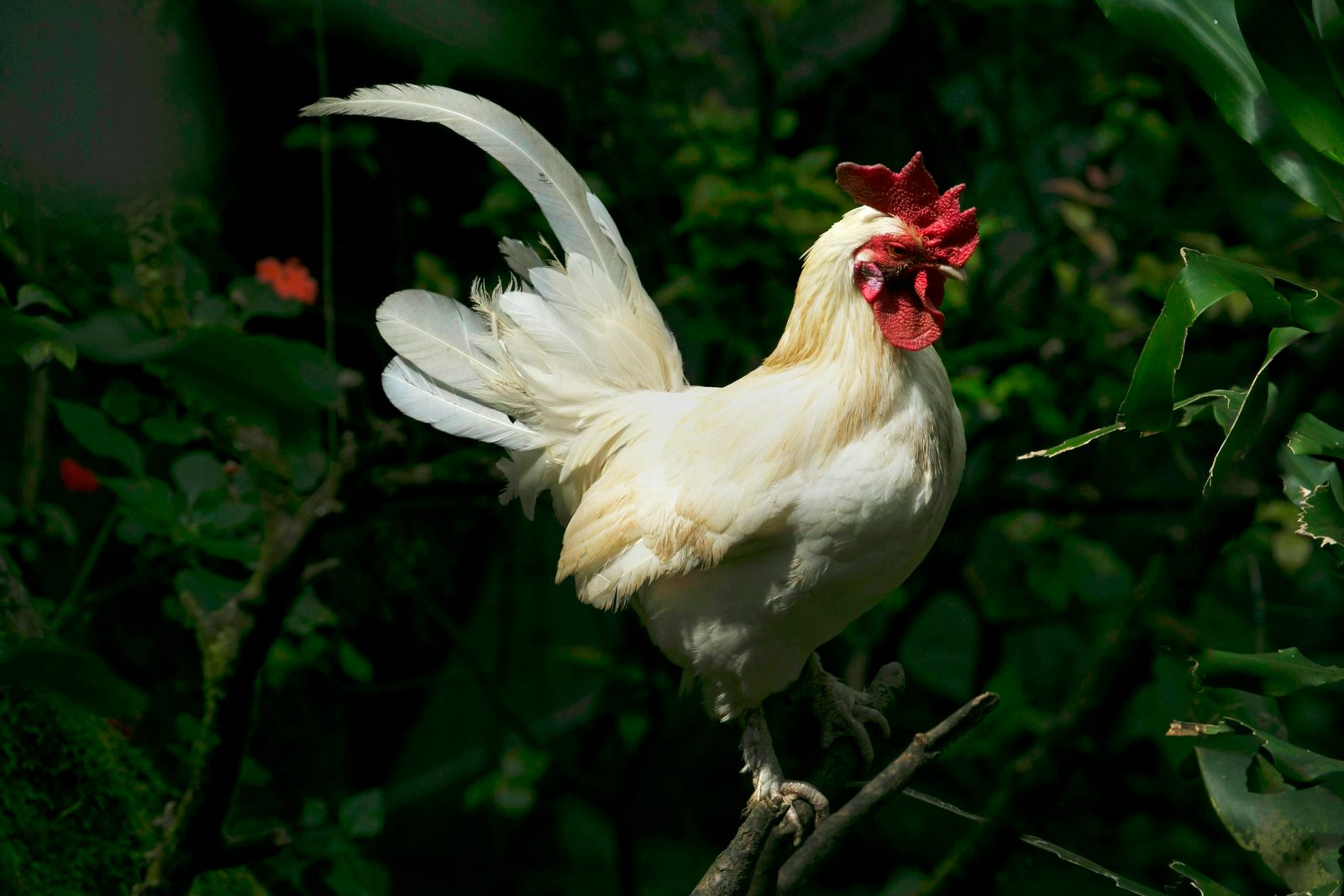
Poultry refers to domesticated birds raised for various purposes, such as for their meat, eggs, or even feathers. While chickens, turkeys, ducks, and geese are typically considered poultry, several more species are included in this category. This guide will explore the main species considered poultry, categorizing them by their biological families and characteristics, so you can understand the diversity within this group and why each bird is valued.
What is Poultry?
Poultry includes a wide variety of birds that are domesticated for human use. They are most commonly raised on farms for subsistence or as part of a commercial enterprise. The main reasons people raise poultry include:
- Meat Production: Many poultry birds are primarily raised for their meat, which is a rich source of protein.
- Egg Production: Eggs are a dietary staple in many cultures, making egg-laying birds an essential part of poultry farming.
- Feathers: Some poultry birds, particularly ducks and geese, are valued for their feathers, used in various products like bedding.
- By-products: For example, emu oil and ostrich leather are valuable by-products from specific poultry species.
- Ornamental Value: Birds like peafowl are also raised for their aesthetic appeal.
Below, I’ll cover the various species of birds that are traditionally and currently considered poultry, diving into each type’s specific characteristics and contributions to poultry farming.
1. Gallinaceous Birds (Galliformes)
Gallinaceous birds are ground-dwelling birds that typically have heavy bodies, strong legs, and a diet that includes seeds, insects, and vegetation. They are among the most common poultry types, comprising several popular species.
Chickens (Gallus gallus domesticus)
Chickens are the most widespread and commonly recognized type of poultry. They are raised globally for both meat and eggs and come in various breeds, each with specific characteristics suited to different climates, farming systems, or production purposes.
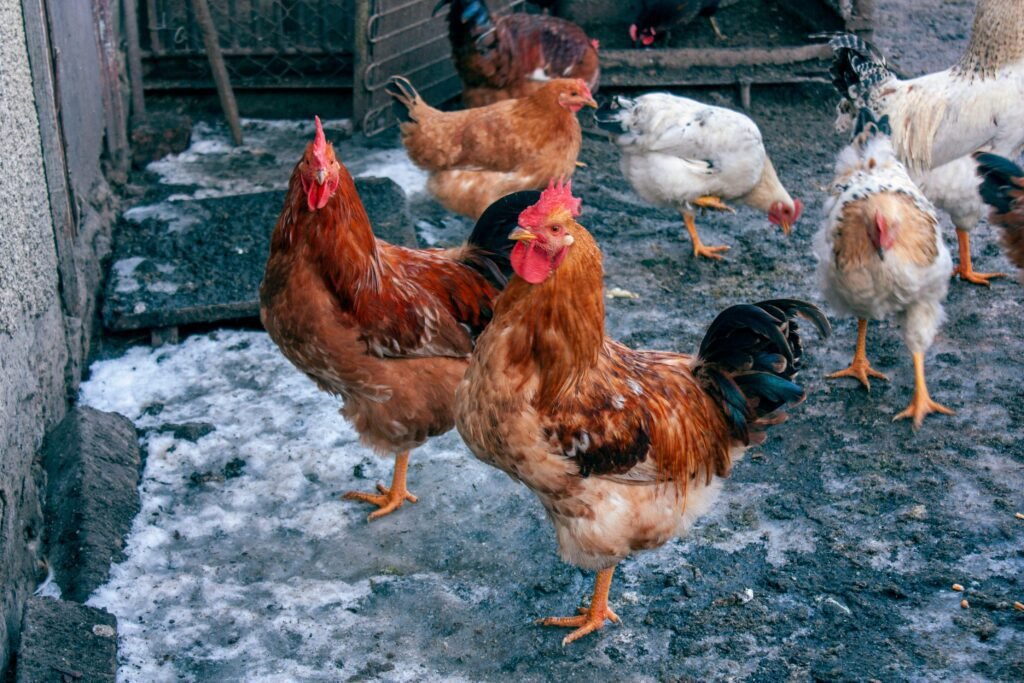
Characteristics
- Dual Purpose: Chickens are versatile and can be raised either for their eggs or meat.
- Breeds: There are hundreds of chicken breeds, each developed for specific qualities, such as egg-laying ability, meat production, or aesthetic appeal.
- Commercial Importance: Chickens are economically significant, as they are affordable and require less space and resources compared to larger livestock.
Turkeys (Meleagris gallopavo)
Turkeys are large, domesticated birds mainly raised for their meat, which is especially popular during festive occasions like Thanksgiving in the United States.

Characteristics
- Meat Production: Turkey meat is leaner compared to chicken and is often preferred for its distinct flavor.
- Breeds: Common turkey breeds include the Broad Breasted White, favored for its large size and rapid growth rate.
- Role in Holidays: Turkeys have cultural significance in certain regions, particularly during holiday feasts.
Guinea Fowl (Numida meleagris)
Guinea fowl are known for their unique calls and spotted feathers. They are hardy birds that can adapt well to free-range environments.
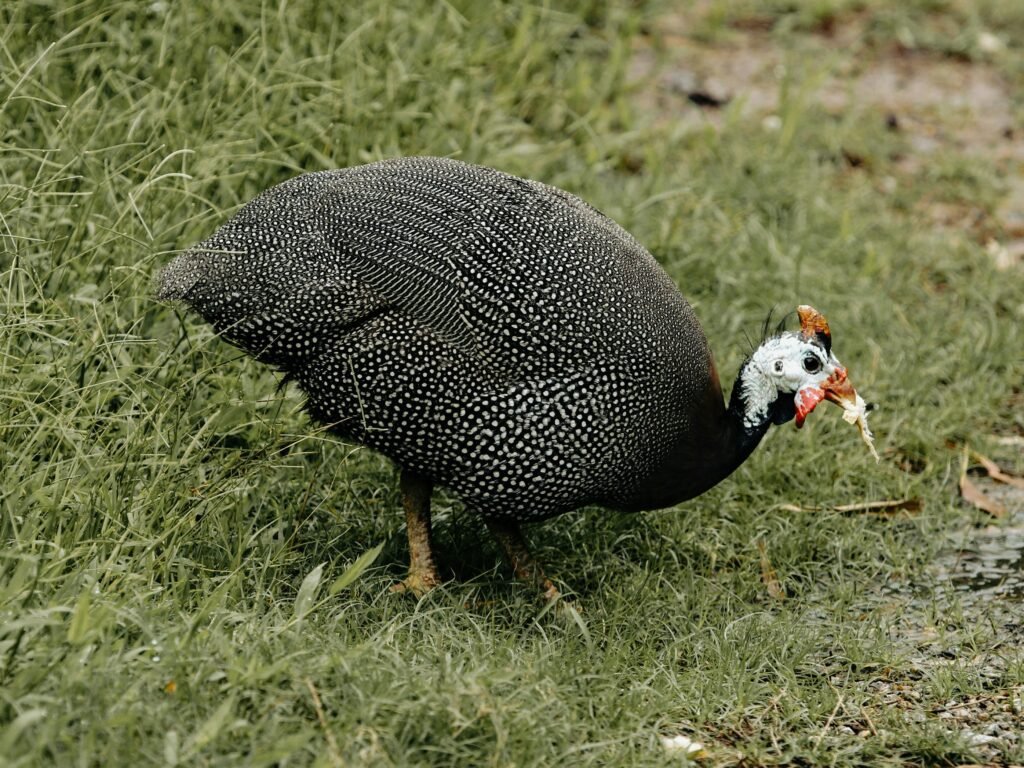
Characteristics
- Pest Control: They are excellent for natural pest control, as they eat insects without damaging crops.
- Egg and Meat Production: Guinea fowl eggs are smaller but highly nutritious, and their meat is lean and flavorful.
- Free-Range Friendly: They thrive in open spaces and require minimal confinement.
Quails (Coturnix coturnix)
Quails are small, and often raised for their delicately flavored eggs, which are considered a delicacy in many cultures.

Characteristics
- Compact Size: Their small size makes them suitable for small farms or urban environments.
- Egg Production: Quail eggs are a popular delicacy, especially in gourmet cuisine.
- Low Maintenance: They require less feed and space than larger poultry birds, making them accessible for small-scale farming.
Pheasants (Phasianidae)
Pheasants are game birds, and certain domesticated varieties are raised for their meat.
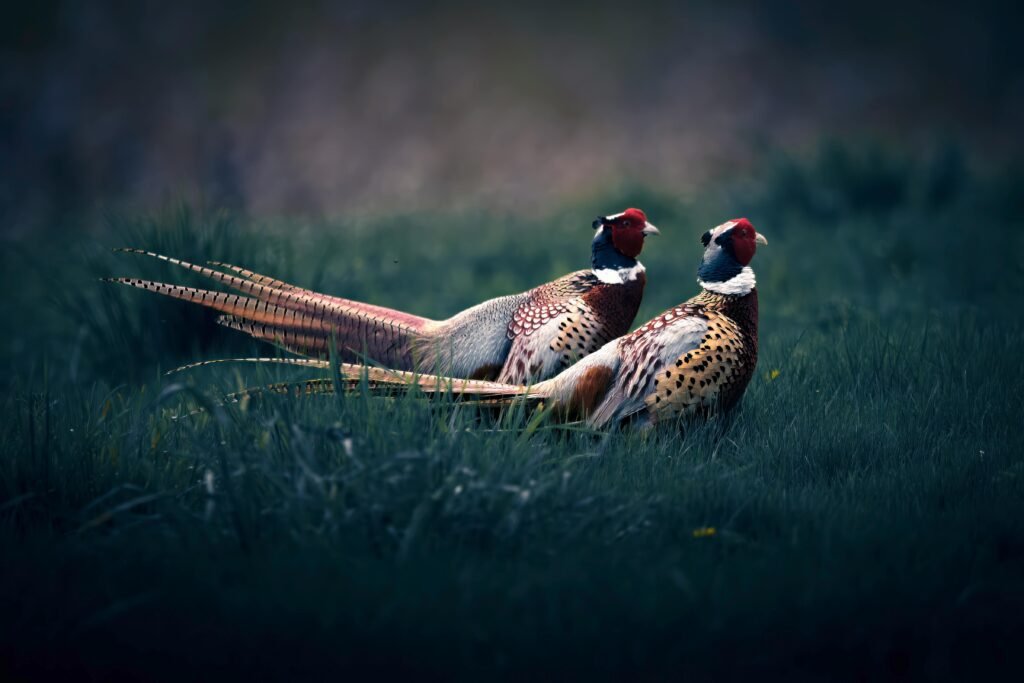
Characteristics
- Meat Production: Pheasant meat is lean and prized for its rich flavor.
- Game Bird Heritage: While primarily wild, some pheasants are domesticated and farm-raised for controlled hunting or gourmet cuisine.
- Ornamental Value: Pheasants are often chosen for their beautiful plumage, particularly in aviaries.
Read Also: Will a Raccoon Kill Chickens? Protect Your Flock Now!
2. Waterfowl (Anseriformes)
Waterfowl are birds adapted to aquatic environments, and they include some of the most traditional species of poultry.
Ducks (Anatidae)
Ducks are versatile waterfowl raised for meat, eggs, and sometimes for their down feathers.

Characteristics
- Multiple Purposes: Some duck breeds, like the Pekin, are bred specifically for meat, while others are valued for their eggs.
- Egg Production: Duck eggs are larger and have a richer taste than chicken eggs.
- Feathers: Some ducks, particularly those raised for down, are valuable for their soft feathers used in insulation and bedding products.
Geese (Anserinae)
Geese are larger than ducks and are raised mainly for meat, though some breeds are also prized for their feathers.

Characteristics
- Meat Quality: Goose meat has a robust flavor and is traditionally used in holiday cooking.
- Feathers: Goose Down is highly valued for use in pillows, comforters, and outerwear.
- Guarding Abilities: Geese are known for their protective behavior and are sometimes used to guard farms.
3. Ratites
Ratites are large, flightless birds known for their strong legs. While less common, they are increasingly being farmed for their meat, feathers, and other products.
Ostriches (Struthio camelus)
Ostriches are the largest living birds, native to Africa, and are farmed for their meat, feathers, and leather.
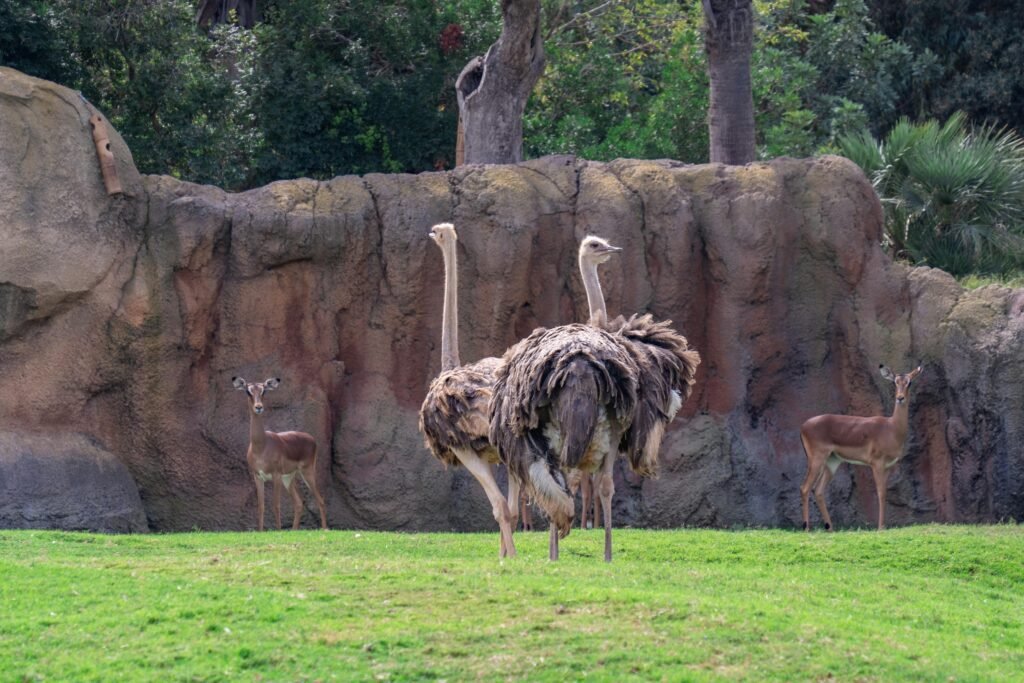
Characteristics
- Large Meat Yield: Ostrich meat is lean, low in cholesterol, and is marketed as a healthy red meat alternative.
- By-products: Ostrich feathers are used in decorative items, and their skin is valuable for leather products.
- Fast Growth: Ostriches grow quickly and can reach harvest size in a relatively short period.
Emus (Dromaius novaehollandiae)
Emus are native to Australia and are raised for their meat, oil, and feathers.
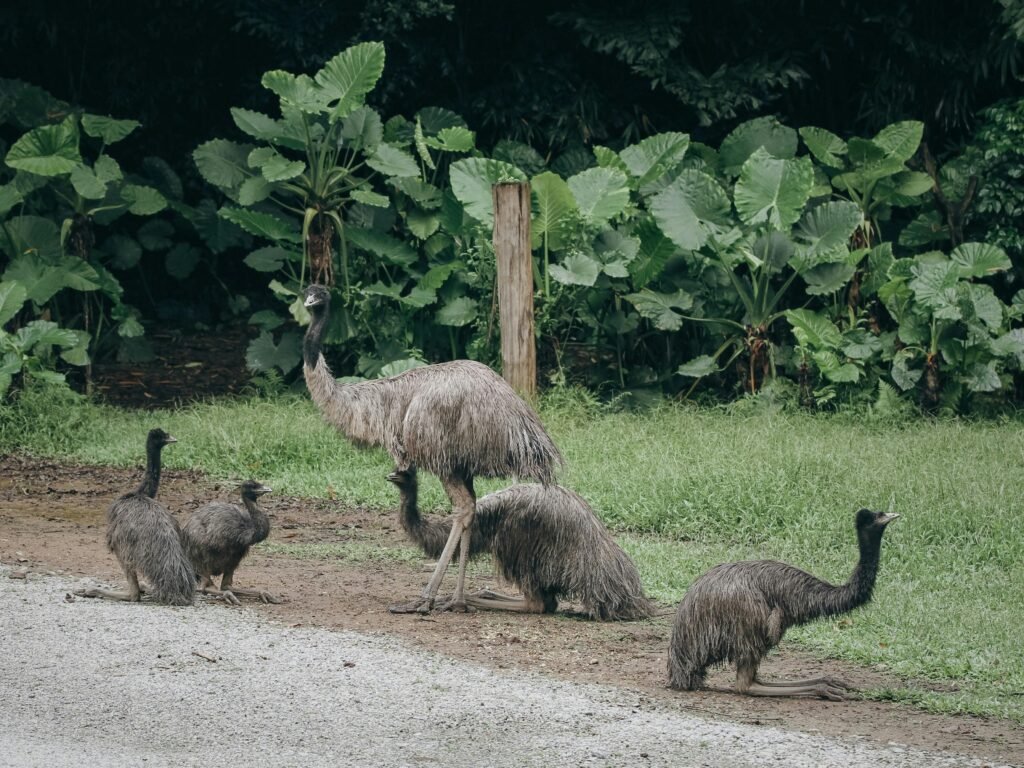
Characteristics
- Emu Oil: Emu oil is extracted from the bird’s fat and is prized for its therapeutic properties.
- Lean Meat: Emu meat is low in fat and rich in iron.
- Feathers and Leather: Emu feathers and leather are used in various products, adding value beyond just meat production.
Rheas (Rhea americana)
Native to South America, rheas are farmed for their meat and feathers, though less commonly than ostriches and emus.

Characteristics
- Meat Production: Rhea meat is similar to that of ostriches, providing a lean alternative to beef.
- Farm Adaptability: Rheas are resilient and adapt well to different farming conditions.
- Commercial Use: Like ostriches and emus, rheas produce valuable by-products, such as leather.
4. Other Less Common Poultry
In addition to the species covered, several other birds are occasionally classified as poultry due to their commercial and culinary uses.
Pigeons and Doves (Columbidae)
Although not as widespread, pigeons, especially young ones known as squabs, are raised as delicacies in certain cuisines.

Characteristics
- Meat Quality: Squab meat is tender and highly prized in gourmet cooking.
- Small-Scale Farming: Pigeons are often raised in small numbers for specialized markets.
- Minimal Space Requirements: Their small size makes them suitable for urban farming.
Peafowl (Pavo cristatus)
Peafowl, particularly peacocks, are sometimes raised for ornamental purposes, though their meat is also consumed in some regions.

Characteristics
- Aesthetic Appeal: Peafowl are popular in ornamental farming due to their striking appearance.
- Hardiness: They are resilient birds that can adapt well to various climates.
- Culinary Use: In some cultures, peacock meat is considered a delicacy, though it’s rare.
Read Also: Why Chickens Have Wings: The Surprising Truth
Final Words
The world of poultry is diverse, encompassing a broad array of bird species beyond the usual chickens, turkeys, ducks, and geese. Each of these birds offers unique qualities and serves different purposes, from their meat and eggs to feathers and ornamental value. Whether you are an aspiring poultry farmer or simply interested in learning more about domesticated birds, understanding the various species of poultry can open up new perspectives on how these birds contribute to agriculture and daily life.
Each type has specific characteristics and roles in farming and agriculture, making poultry a versatile and essential part of human sustenance and culture.
